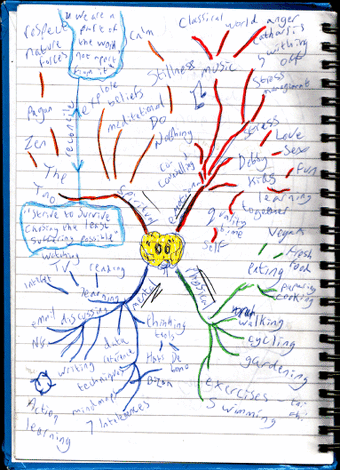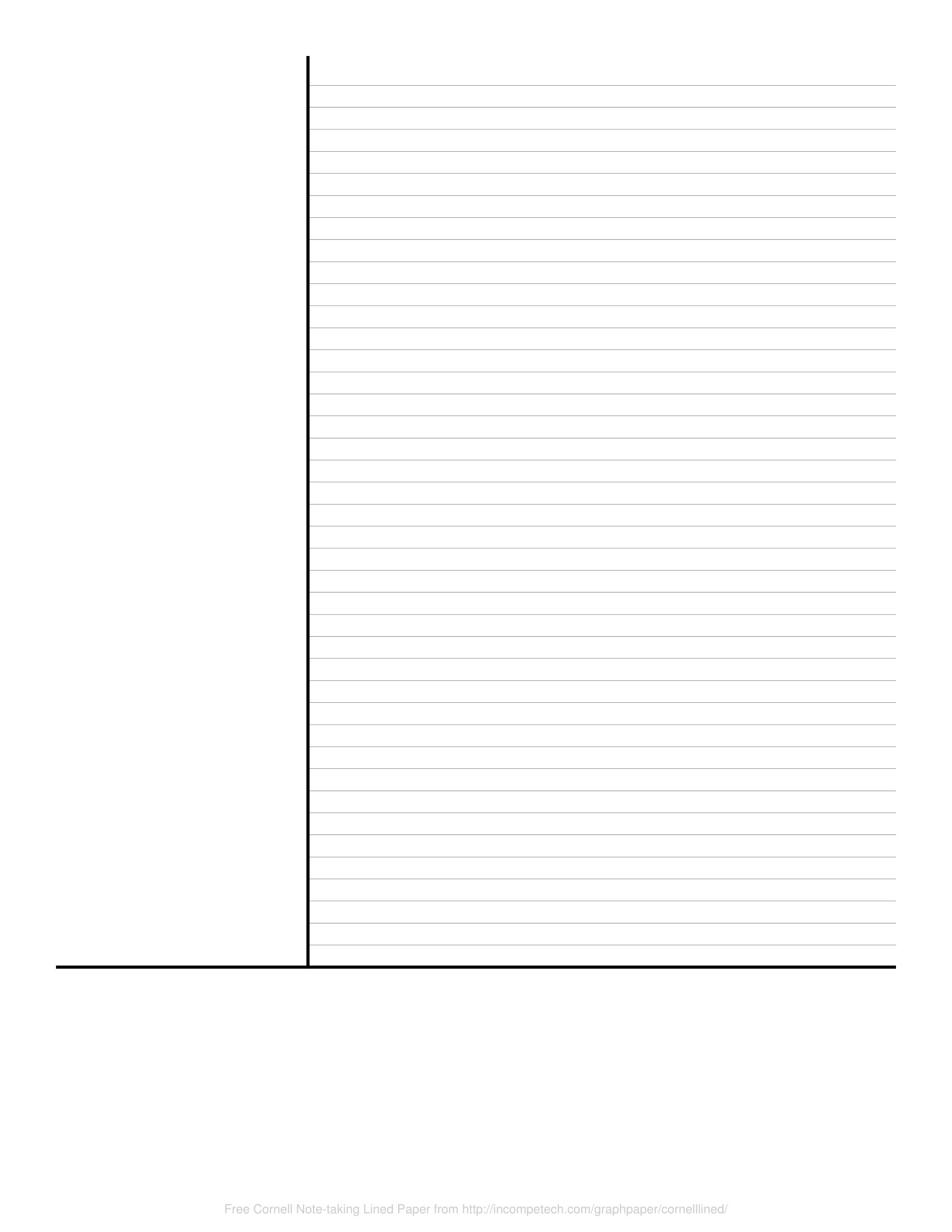- Cornell Notes Pdf Generator
- Cornell Note Taking Method Custom Pdf Generator Apa
- Cornell Note Taking Method Custom Pdf Generator Free
Cornell Notes PDF Generator. One change is the Cornell Notes method. Using the Cornell Note- taking Template From the File menu. Classmint.com for Cornell Note-taking; Generate custom PDF Cornell. Cornell Notes Custom PDF Generator. Cornell Method PDF-generator: a simple tool to 'create custom. Callisto, CommentPress, ConnectedText, Cornell. The Marquette Style differs from the Cornell Style in 2 major ways. Marquette uses 50% of the vertical space for a summary area. Cornell uses about 18% for its summary area. Marquette style puts the 'summary' blank area on top, while Cornell is on the bottom. I've seen Marquette style inverted enough, that I'm not even sure that's a rule. It is only via these notes that a person can grasp a particular subject in a precise manner. To help in this note-taking method, Cornell note-taking system is of great help!In case you are not sure as to how to deal with this system of taking notes you can check out websites for Cornell notes. However, the Cornell note taking method makes this possible. Originally, the Cornell Note Taking was a note-taking system that was used to take notes during lectures. The method is named after the Cornell University. The Cornell Note Taking method also works very well in other situations. Cornell Notetaking Method Custom PDF Generator - Make yourself different than others Forget the use the same old fullscape paper during note-taking in lectures. You wanna create your own personal notepaper, try this out via eleven21.com.

The Cornell Notes system (also Cornell note-taking system, Cornell method, or Cornell way) is a note-taking system devised in the 1940s by Walter Pauk, an education professor at Cornell University. Pauk advocated its use in his best-selling book How to Study in College.[1]
Overview of the method[edit]

The Cornell method provides a systematic format for condensing and organizing notes. This system of taking notes is designed for a high school or college level student. There are several ways of taking notes, but one of the most common one is the 'two column' notes. The student divides the paper into two columns: the note-taking column (usually on the right) is twice the size of the questions/keyword column (on the left). The student leaves five to seven lines, or about two inches (5 cm), at the bottom of the page.
Notes from a lecture or teaching are written in the note-taking column; notes usually consist of the main ideas of the text or lecture, and long ideas are paraphrased. Long sentences are avoided; symbols or abbreviations are used instead. To assist with future reviews, relevant questions (which should be recorded as soon as possible so that the lecture and questions will be fresh in the student's mind) or key words are written in the key word column. These notes can be taken from any source of information, such as fiction books, DVDs, lectures, text books, etc.[2]
When reviewing the material, the student can cover the note-taking (right) column while attempting to answer the questions/keywords in the key word or cue (left) column. The student is encouraged to reflect on the material and review the notes regularly.[3]
Cornell Notes Pdf Generator
Studies on effectiveness[edit]

A study published in 2010 by Wichita State University compared two note taking methods in a secondary English classroom, and found that Cornell Note taking may be of added benefit in cases where students are required to synthesize and apply learned knowledge, while the guided notes method appeared to be better for basic recall.[4]
Another study published in the summer of 2013 found that 'Students who were taught CN (Cornell notes) did take better notes than those who were not, but they did not have higher achievement results.' The study also stated that 'Through analysis of assessment scores, I found no significant difference between the intervention and base classes on achievement.'[5]
Cornell note-taking can give students an effectiveness in organization of thoughts that they have been taught and give a better review in recollecting all the information that they have learned.[6] The Cornell note taking system is not only a fast method of writing notes, but one is able to absorb the information that is given at a faster rate.[7]
This method can improve student's studying and listening skills.[8]
See also[edit]
References[edit]
- ^Pauk, Walter; Owens, Ross J. Q. (2010). How to Study in College (10 ed.). Boston, MA: Wadsworth. ISBN978-1-4390-8446-5. Chapter 10: 'The Cornell System: Take Effective Notes', pp. 235-277
- ^'How to take notes as a law student - Becoming A Lawyer'. Becoming A Lawyer. 2017-01-06. Archived from the original on 2017-09-05. Retrieved 2017-03-18.
- ^Wong, Linda (2014-01-01). Essential Study Skills (8 ed.). Cengage Learning. p. 288. ISBN978-1285430096.
- ^Jacobs, Keil. A Comparison of Two Note Taking Methods in a Secondary English Classroom Proceedings: 4th Annual Symposium: Graduate Research and Scholarly Projects [79]Conference proceedings held at the Eugene Hughes Metropolitan Complex, Wichita State University, April 25, 2008. Symposium Chair: David M. Eichhorn
- ^Broe, Duane (Summer 2013). 'The Effects of Teaching Cornell Notes on Student Achievement'(PDF). www.minotstateu.edu/#. Retrieved 2017-05-12.
- ^Quintus, Lori; Borr, Mari; Duffield, Stacy; Napoleon, Larry; Welch, Anita (Spring–Summer 2012). 'The Impact of the Cornell Note-Taking Method on Students' Performance in a High School Family and Consumer Sciences Class'(PDF). www.natefacs.org. Retrieved 2018-10-10.
- ^P, Mulder (2012). 'Cornell Note Taking method (Cornell note taking method advantages)'. Toolshero. Retrieved 2018-09-20.
- ^Zulejka, Baharev (2016). The effects of Cornell note-taking and review strategies on recall and comprehension of lecture content for middle school students with and without disabilities (Thesis). Rutgers University - Graduate School of Education. doi:10.7282/T3HD7XZ8.
External links[edit]
| Wikibooks has a book on the topic of: Note Taking |
- 'The Cornell Note-taking System'. Cornell University, Learning Strategies Center.PDF
Cornell Notes templates[edit]
- Cornell Note-taking Lined Paper PDF Generator Incompetech.com
- Generate custom PDF Cornell Notetaking pages Wyzant.com
- Cornell Note Paper Over a dozen pre-printed Cornell Note pads, reviewed on Amazon.com
- Make Your Cornell Notes Template with Word Anne Hennegar, TimeAtlas.com, 2017. Includes video, Word template and PDF
Cornell Note Taking Method
Note Taking Area: Record lecture as fully and as meaningfully as possible.
Cue Column: As you're taking notes, keep cue column empty. Soon after the lecture, reduce your notes to concise jottings as clues for Reciting, Reviewing, and Reflecting.
Summaries: Sum up each page of your notes in a sentence or two.
This format provides the perfect opportunity for following through with the 5 R's of note-taking:
Cornell Note Taking Method Custom Pdf Generator Apa
- Record
During the lecture, record in the main column as many meaningful facts and ideas as you can. Write legibly. - Reduce
As soon after as possible, summarize these facts and ideas concisely in the Cue Column. Summarizing clarifies meanings and relationships, reinforces continuity, and strengthens memory. - Recite
Cover the Note Taking Area, using only your jottings in the Cue Column, say over the facts and ideas of the lecture as fully as you can, not mechanically, but in your own words. Then, verify what you have said. - Reflect
Draw out opinions from your notes and use them as a starting point for your own reflections on the course and how it relates to your other courses. Reflection will help prevent ideas from being inert and soon forgotten. - Review
Spend 10 minutes every week in quick review of your notes, and you will retain most of what you have learned.
Cornell Note Taking Method Custom Pdf Generator Free
Adapted from How to Study in College 7/e by Walter Pauk, 2001 Houghton Mifflin Company